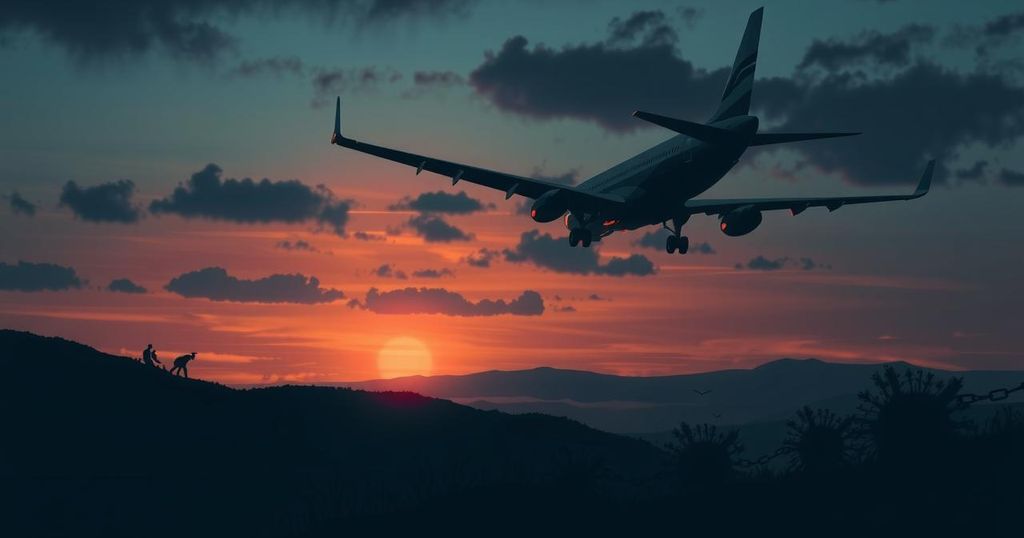World news
AFRICA, AL AKHBAR, ALPHA LINE, ASIA, AV, AVIGDOR LIEBERMAN, CONFLICT, DAMASCUS, DARAA, EGYPT, EUROPE/ASIA, GAZA, GAZA STRIP, GOLAN, GOLAN HEIGHTS, HAI, HAIDAR MUSTAFA, HEZBOLLAH, HMEIMIM, ISRAEL, ISRAELI KNESSET, LATAKIA, LEBANON, MILITARY OPERATIONS, MOSCOW, MOUNT HERMON, NORTH AMERICA, QUNEITRA, RETALIATION, RUSSIA, SYRIA, TEL AVIV, UN, UNITED STATES, WAR, WEST BANK
Amira Khan
0 Comments
Russia Reinforces Military Presence Near Golan Heights Amidst Escalating Israeli Activities
Russia has increased its military presence in southern Syria to prevent potential Israeli escalations, particularly near the Golan Heights. The consolidation of observation posts coincides with Israeli construction projects deemed violations of international law. The situation is further complicated by Israel’s airstrikes and the geopolitical ramifications of military collaborations between Russia and Syria.
Russia has augmented its military presence in southern Syria, particularly at nine observation posts, in collaboration with the Damascus government, to mitigate potential escalations from Israel. Reports indicate that these posts, situated in the Daraa and Quneitra regions adjacent to the Israeli-occupied Golan Heights, have been reinforced as tensions escalate due to Israeli construction activities perceived as violations of international law. In parallel, Israeli efforts to erect a separation wall along the disengagement zone have drawn criticism, including accusations from the UN of violating a longstanding ceasefire with Syria.
Recent satellite imagery confirmed extensive construction work, stretching 7.5 kilometers along the Alpha Line, where Israeli armored units and tanks have been deployed for security operations. In commentary regarding the ongoing situation, Israeli Knesset member Avigdor Lieberman has stated that should Syria continue to serve as a logistical hub for adversaries, Israel may assert control over the Syrian segment of Mount Hermon indefinitely.
The ongoing Israeli military actions, which include frequent airstrikes targeting Syrian infrastructures, have surged since the outbreak of the conflict in Lebanon in late September. Russia’s engagement in the region includes collaborative operations with Syrian forces to confront extremist groups, as well as aerial and terrestrial monitoring to ensure safety and stability. This Russian military activity follows a disengagement agreement that restored government control over areas previously held by Israeli-backed militants.
Both Russian and Syrian forces are committed to enhancing security conditions in the region, where past Israeli actions—ranging from the imposition of citizenship to settlement expansions—are viewed as blatant violations of international law, as noted by commentators on the subject. The backdrop of these developments underscores the complexities of Middle Eastern geopolitics and the persistent volatility affecting the region.
The recent escalation of tensions near the Israeli-occupied Golan Heights is rooted in a series of military and political maneuvering by various actors in the region, chiefly Israel, Russia, and Syria. The construction of a separation wall by Israel, characterized as a breach of a 50-year ceasefire agreement, has amplified concerns over escalating conflicts. Concurrently, Russia’s strategic military presence aims to stabilize the area and support Syrian governance, reflecting the intricate power dynamics at play in the Middle East. This interplay highlights the ongoing struggles for territorial control and national sovereignty amidst an environment marked by foreign interventions and regional hostilities.
In summary, the increased Russian military presence near the Israeli-occupied Golan Heights signifies a response to escalating tensions resulting from Israeli construction activities perceived as violations of international accords. As Israel continues its military operations within Syria, Moscow’s engagement aims to stabilize the situation and support the Syrian government. This complex dynamic remains heavily influenced by historical agreements, ongoing military actions, and the broader geopolitical landscape in the Middle East.
Original Source: thecradle.co




Post Comment